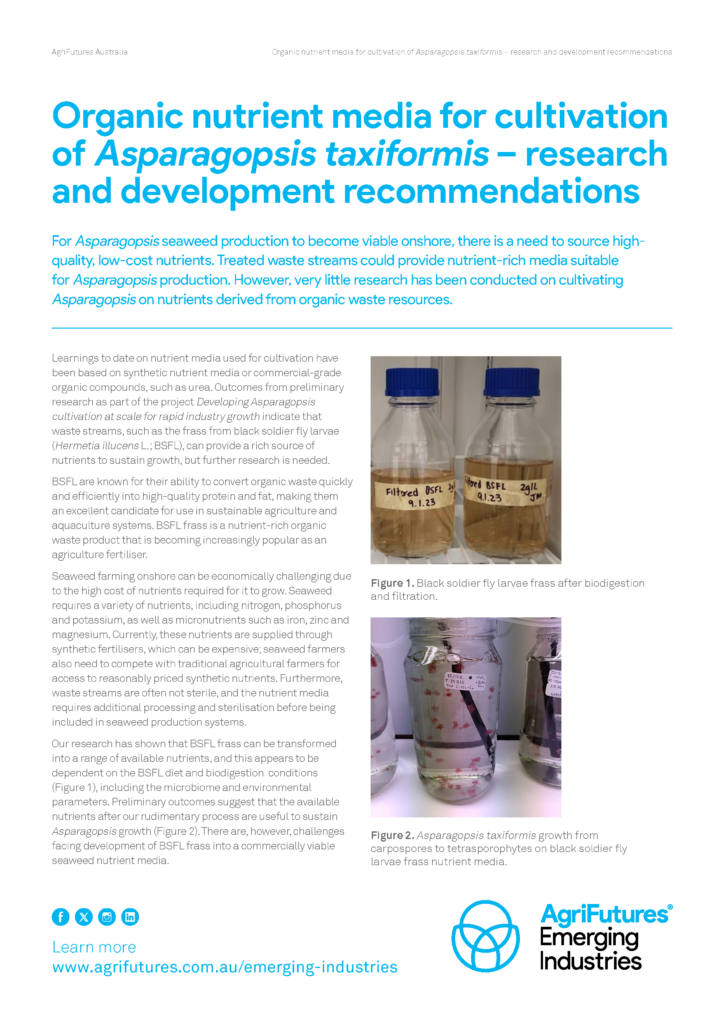For Asparagopsis seaweed production to become viable onshore, there is a need to source high-quality, low-cost nutrients. Treated waste streams could provide nutrient-rich media suitable for Asparagopsis production. However, very little research has been conducted on cultivating Asparagopsis on nutrients derived from organic waste resources.
Learnings to date on nutrient media used for cultivation have been based on synthetic nutrient media or commercial-grade organic compounds, such as urea. Outcomes from preliminary research as part of the project Developing Asparagopsis cultivation at scale for rapid industry growth indicate that waste streams, such as the frass from black soldier fly larvae (Hermetia illucens L.; BSFL), can provide a rich source of nutrients to sustain growth, but further research is needed.
BSFL are known for their ability to convert organic waste quickly and efficiently into high-quality protein and fat, making them an excellent candidate for use in sustainable agriculture and aquaculture systems. BSFL frass is a nutrient-rich organic waste product that is becoming increasingly popular as an agriculture fertiliser.





